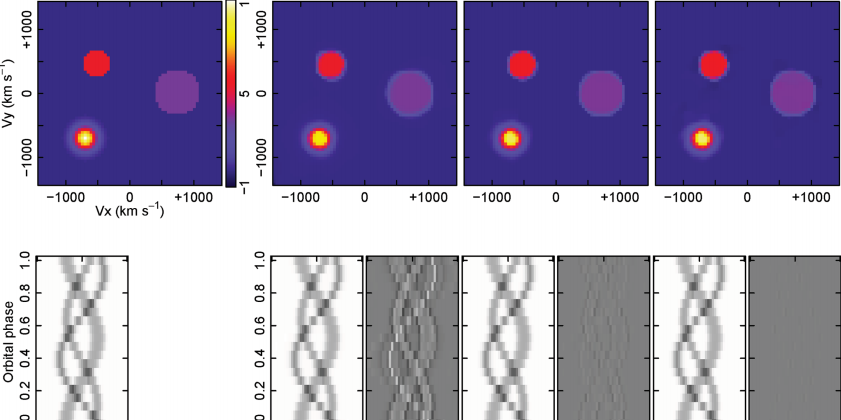M. Uemura, T. Kato, T. Ohshima, and H. Maehara, “Reconstruction of the Structure of Accretion Disks in Dwarf Novae from the Multi-Band Light Curves of Early Superhumps,” PASJ, vol. 64, p. 92, 2012.
We propose a new method to reconstruct the structure of accretion disks in dwarf novae using multi-band light curves of early superhumps. Our model assumes that early superhumps are caused by the rotation effect of non-axisymmetrically flaring disks. We have developed a Bayesian model for this reconstruction, in which a smoother disk-structure tends to have a higher prior probability. We analyzed simultaneous optical and near-infrared photometric data of early superhumps of the dwarf nova, V455 And using this technique. The reconstructed disk has two flaring parts in the outermost region of the disk. These parts are responsible for the primary and secondary maxima of the light curves. The height-to-radius ratio is h/r 0.20-0.25 in the outermost region. In addition to the outermost flaring structures, flaring arm-like patterns can be seen in an inner region of the reconstructed disk. The overall profile of the reconstructed disk is reminiscent of the disk structure that is deformed by the tidal effect. However, an inner arm-like pattern, which is responsible for the secondary minimum in the light curve, cannot be reproduced only by the tidal effect. It implies the presence of another mechanism that deforms the disk structure. Alternatively, the temperature distribution of the disk could be non-axisymmetric. We demonstrate that the disk structure with weaker arm-like patterns is optimal in the model including the irradiation effect. However, the strongly irradiated disk gives quite blue colors, which may conflict with the observation. Our results suggest that the amplitude of early superhumps depends mainly on the height of the outermost flaring regions of the disk. We predict that early superhumps can be detected with an amplitude of > 0.02 mag in about 90% of WZ Sge stars.






